What exactly makes lager beer distinctive? Renowned for its refreshingly clean flavor, is lager beer a type of beer that undergoes a special cold fermentation with lager yeast. With no fluff, this article delves into the heart of lager brewing – you’ll learn about the essential components and processes that give lager its smooth, crisp taste.
Key Takeaways
- Lager beer is defined by its cold-fermentation process using lager yeast, offering a diverse range of styles that feature a clean, crisp taste and higher levels of carbonation.
- Technological advancements such as mechanical refrigeration and a global shift in beer consumption have influenced the evolution of lager brewing, allowing for greater accessibility and diverse regional flavors.
- The main differences between lager and ale are the type of yeast used, the fermentation temperature, and the resulting flavor profiles, with lagers being characterized by a crisper and cleaner taste.
Defining Lager Beer
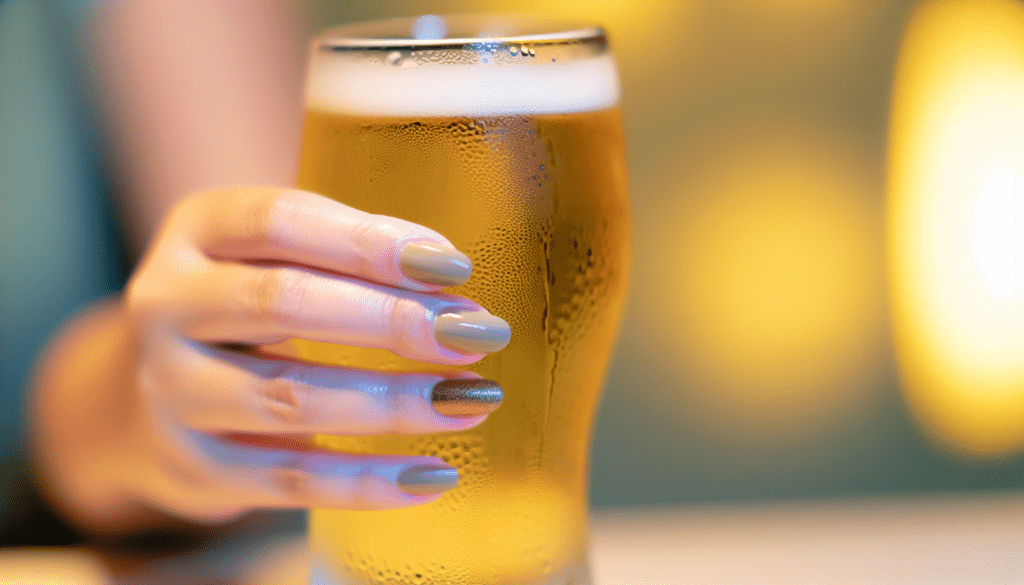
Lager beer stands out in the vast world of brewing with its unique cold-fermentation process, a defining characteristic that sets it apart from other beer styles. The origin of lager beer can be traced to Central Europe, particularly Germany and the Czech Republic, where traditional brewing practices and local conditions shaped its development. The term ‘lager’ encompasses a diverse array of beer styles that all undergo this low-temperature fermentation process using a special type of yeast known as lager yeast.
One might wonder how lagers attain their distinct taste and appearance? We will explore the defining characteristics, ingredients, and fermentation process of lager that contribute to its uniqueness. The alcohol content of lagers can vary significantly depending on the style, and is an important factor in defining each type. When it comes to appearance, the colour of lagers ranges from pale gold to deep brown, and plays a crucial role in identifying and differentiating lager styles. Additionally, the flavour profile of lagers is a key aspect that sets them apart from other beers, influenced by both ingredients and brewing methods.
Characteristics
Lagers are renowned for their distinct sweet, crisp, and ‘cleaner’ taste, making them a refreshing alternative to the richer profiles typically found in ales. This ‘clean’ taste profile is often described as mellow, offering a smooth and easy-drinking experience. The diverse color palette of lagers can range from a bright, pale straw hue—such as in Helles lagers, where ‘hell’ is the German word for ‘pale’ or ‘bright’—to a deep amber or even dark brown, depending on the style and malts used. Despite these varying colors, lagers maintain a notable clarity, enhancing their visual appeal. The range of flavors includes mildly sweet notes in some lagers like Helles, while certain dark or amber styles can be sweeter, appealing to those who prefer a more malt-forward profile. With the unique characteristics of ale and lager, beer enthusiasts are sure to find a brew that suits their taste preferences.
In addition to their taste and appearance, lagers, often considered as the ale counterpart, feature higher levels of carbonation compared to ales, contributing to a less bitter taste and a distinct mouthfeel. The body and carbonation of a lager can offer a range of palate sensations, from a smooth and silky texture to a dry and crisp finish, and some lagers are full bodied, providing a rich, satisfying mouthfeel that contrasts with lighter styles, making every sip a unique experience.
Ingredients
The core ingredients of a lager beer are:
- Water, which makes up about 90% of the beer’s content and plays a pivotal role in lager brewing. Its quality and mineral content, particularly softness, are crucial for flavor development, underscoring the importance of sourcing high-quality water for brewing.
- Malted barley, which provides the fermentable sugars that yeast will convert into alcohol during the brewing process. Historically, both bread and beer have served as essential sources of nutrition in medieval Europe, with bread and beer sharing similar fermentation processes and cultural significance.
- Hops, which contribute bitterness, aroma, and flavor to the beer. They also act as a natural preservative.
- Yeast, which ferments the sugars in the malted barley, producing alcohol and carbon dioxide.
Each of these ingredients plays a crucial role in the beer’s flavor and composition.
Meanwhile, malted barley, the primary grain used in lagers, provides the necessary sugars for fermentation, driving the beer’s alcoholic content. Hops add an extra layer of complexity to lager beer, introducing bitterness, flavor, and aroma, while also acting as a stabilizing agent to enhance the longevity of the beer.
Fermentation Process
At the heart of lager brewing is a unique fermentation process, setting it apart from other beer styles. Lager yeast, formally known as Saccharomyces pastorianus, is a bottom-fermenting yeast that performs fermentation at colder temperatures, contrasting with ale yeast that floats to the surface during warmer fermentation processes.
This colder fermentation, typically occurring between 7-13 Celsius, results in lager yeast producing fewer esters and fusel alcohols, as well as sulfur compounds. When properly managed, these sulfur compounds give lagers typically their distinctive crisp taste.
Following the fermentation, lagers are aged at cold temperatures for several weeks or even months in a process known as lagering. This extended aging improves clarity and flavor, enhancing smoothness and developing rich malty flavors over varying durations based on the beer type.
Evolution of Lager Brewing
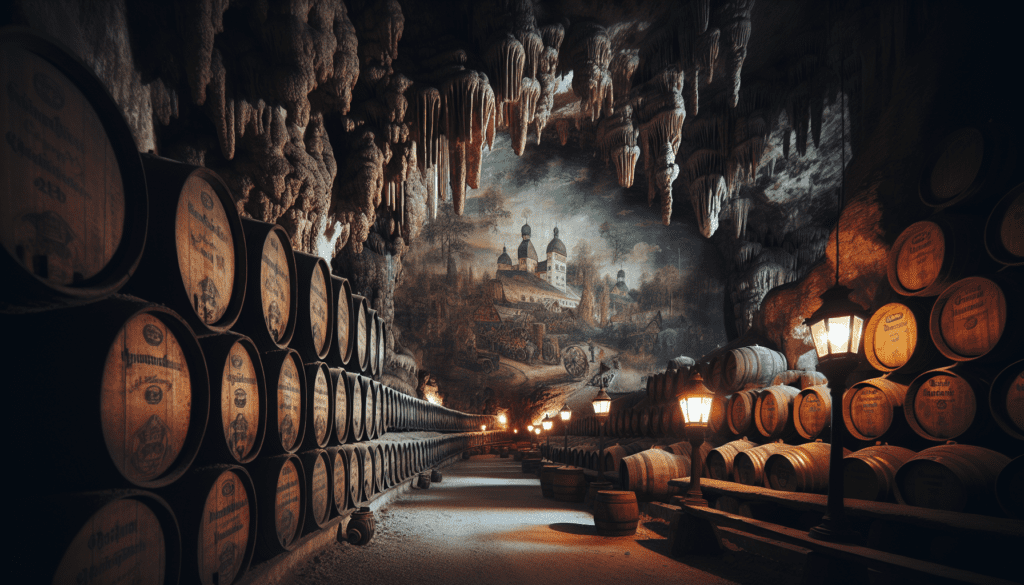
The story of lager brewing is one that spans centuries and continents, from its humble origins in 1400s Bavaria to today’s global proliferation. As lager spread, each country contributed unique styles and traditions, such as Mexican, Italian, and Japanese lagers, enriching the world of lager beer. The evolution of lager brewing bears testament to the adaptability and resilience of this beer style, with the rise in popularity of lagers during the 19th century marking a significant shift in beer history. Each chapter in its history has contributed to the complex and diverse range of lagers we enjoy today.
We will examine the origins, proliferation, and contemporary advancements in lager brewing.
Origins
The origins of lager can be traced back to the cold caves of Bavaria in the 1400s, where beer was fermented and stored in cool conditions. The term ‘lager’ is derived from the German word for ‘storage,’ a nod to these early cold storage and fermenting practices. Munich, in particular, played a significant role in the history of lager, promoting the dark lager beer styles due to its local water profile rich in calcium carbonate. German beers, especially those from Bavaria and Munich, were instrumental in shaping the early development of lager styles, with their rich heritage and distinct regional characteristics influencing beer traditions worldwide.
However, as beer preferences evolved over time, Munich adapted to the wider popularity of the Pilsner beer style. This led to the emergence of the Munich Helles style in the late 19th century, a testament to the city’s ability to innovate and adapt.
Spread and Development
The spread and development of lager brewing were facilitated by a series of technological advancements and socio-cultural shifts. The invention of mechanical refrigeration by Carl von Linde in 1873 was a game-changer, allowing lager brewing to become a year-round activity in any location.
Meanwhile, the late 1800s saw lager spread across Europe, with its superior storability and transportability playing a key role in its wider acceptance. This period also saw the birth of the golden lager with the advent of Pilsner Urquell in 1842, a Czech pilsner that marked the widespread acceptance of the Pilsner style and further solidified lager’s place in the global beer landscape. Pilsners, originating from the Czech region, became a defining style that influenced lagers worldwide.
Modern Lager Brewing
Fast forward to the current day, and lager brewing has come a long way from its origins in Bavarian caves. The craft beer movement has sparked a resurgence of interest in lager brewing, shifting the perception of lager from a simple, mass-produced beer to one of quality and complexity.
Contemporary craft brewers are breathing new life into traditional lager styles, often using locally sourced ingredients to give their beers distinctive regional flavors. Modern lager brewing techniques have evolved significantly, with craft brewers exploring a vast array of lager styles using both historical and innovative brewing techniques. In addition to classic pilsner and Märzen, many craft brewers are reviving and experimenting with other lagers, each offering unique flavor profiles, appearances, and brewing histories within the broader lager category.
Popular Lager Styles
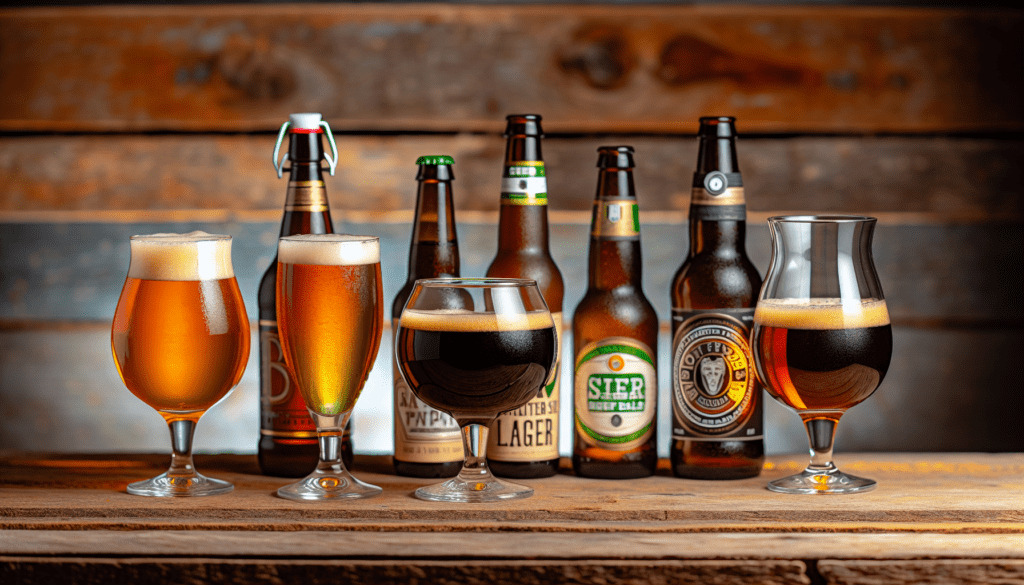
Lagers come in a multitude of styles, each with its unique characteristics and flavor profiles. In fact, there are quite a lot of lagers to choose from, and some might even say there are too many lagers available for beer enthusiasts. From the light and refreshing Pale Lager to the rich and complex Dark Lager, there’s a lager to suit every palate. We will explore some of the most popular lager styles, including Pale Lager, Amber Lager, and Dark Lager, each offering a unique taste journey.
Pale Lager
Pale Lager is the most widely consumed style of beer, recognized for its very pale to golden color and a well-attenuated body with a noble hop bitterness. The Pilsner style, originating from the Bohemian town of Pilsen in 1842, marked a shift in lager brewing with a clear, golden appearance and a taste that is drier and hoppier than Bavarian lagers. In contrast to the popular pale ale, this style focuses on the crisp and refreshing characteristics of pale lager.
On the other side of the globe, the American Light Lager has gained popularity for its light body and low bitterness, catering to those seeking a milder beer experience. These beers are often brewed with a lower alcohol content, making them more sessionable and approachable. In contrast, the India Pale Ale offers a more robust and hoppy flavor profile. Moreover, International Pale Lagers have emerged as the flagship beers for major global breweries, offering a light and clean taste designed to be widely accessible and appealing to an international audience.
Amber Lager
Venturing into the realm of Amber Lagers, we find styles like Märzen, Bock, and Vienna Lager, each offering a unique flavor experience. Märzen, for instance, is a traditional German amber lager, historically brewed in March and consumed during autumn festivals. Märzen is often considered sweeter and more malt-forward compared to other lagers, making it appealing to those who prefer a richer, fuller-bodied beer.
The Vienna Lager style, developed by Anton Dreher in the late 1830s, adds another notable member to the amber lager family, distinguishing itself with its unique flavor profile. To cater to festival-goers seeking a lighter beverage, a modern version of traditional Oktoberfest lagers, known as Festbier, was crafted to be lighter in both color and body.
Dark Lager
Finally, we turn our attention to the realm of Dark Lagers, featuring styles like Dunkel and Schwarzbier. Despite their darker hues, these lagers offer a unique depth of flavor while maintaining the crisp finish characteristic of lagers. Dunkel, a traditional dark lager from Germany, is noted for its smooth malty flavor, and some examples showcase subtle notes of chocolate in their profile. These lagers are often full bodied, providing a rich and satisfying mouthfeel.
Despite their richer flavor profiles, dark lagers are often lower in alcohol and are deceptively drinkable. Schwarzbier, another German dark lager, features a mild roasted malt character without the heaviness found in stouts or porters, offering a unique balance between depth of flavor and lightness.
Lager vs. Ale: Key Differences
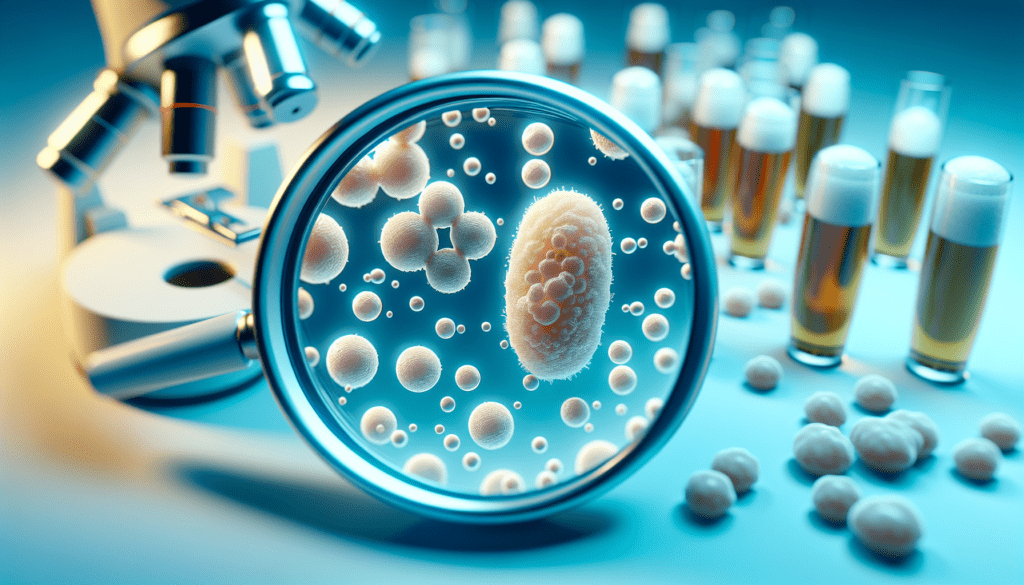
Now that we’ve explored the world of lagers, let’s draw a comparison between lagers and their ale counterparts, both ales and lagers being the two main branches of beer. The key differences between these two lie in the yeast used, fermentation temperature, and resulting flavor profiles. Ales are typically brewed using warm fermentation, which occurs at higher temperatures and produces more esters, giving ales their distinct aroma and taste.
We will explore these differences in more detail in the subsequent subsections.
Yeast
One of the main factors that determine whether a beer is classified as an ale or a lager is the type of yeast used in fermentation. Lager beers use a bottom-fermenting yeast known as Saccharomyces pastorianus, which performs fermentation at colder temperatures.
On the other hand, ale fermentation typically uses Saccharomyces cerevisiae, a top-fermenting yeast that produces large, foamy heads during fermentation at temperatures between 60–75°F,. Interestingly, some lager yeasts are genetically ale yeasts that have adapted to lager brewing conditions.
Fermentation Temperature
The temperature at which fermentation occurs is another key differentiator between lagers and ales. Lager yeasts generally ferment best at colder temperatures, ranging from 45°F to 55°F. This colder fermentation process slows down yeast activity, produces less foam, and can reduce the production of byproducts like diacetyl, which contribute to the beer’s flavor profile.
Flavor Profiles
The different fermentation processes and yeast types used in brewing lagers and ales result in distinct flavor profiles for each. Lagers are often perceived as having a cleaner and more crisp taste, whereas ales are known for their pronounced fruity and spicy flavors.
The cleaner taste of lagers is due to colder fermentation temperatures, which result in lower production of aromatic compounds, allowing malt and hop flavors to be more prominent. Conversely, ales, fermented at warmer temperatures, produce more esters and aromatic compounds, contributing to their characteristic fruity and spicy notes.
Brewing and Enjoying Lager Beer
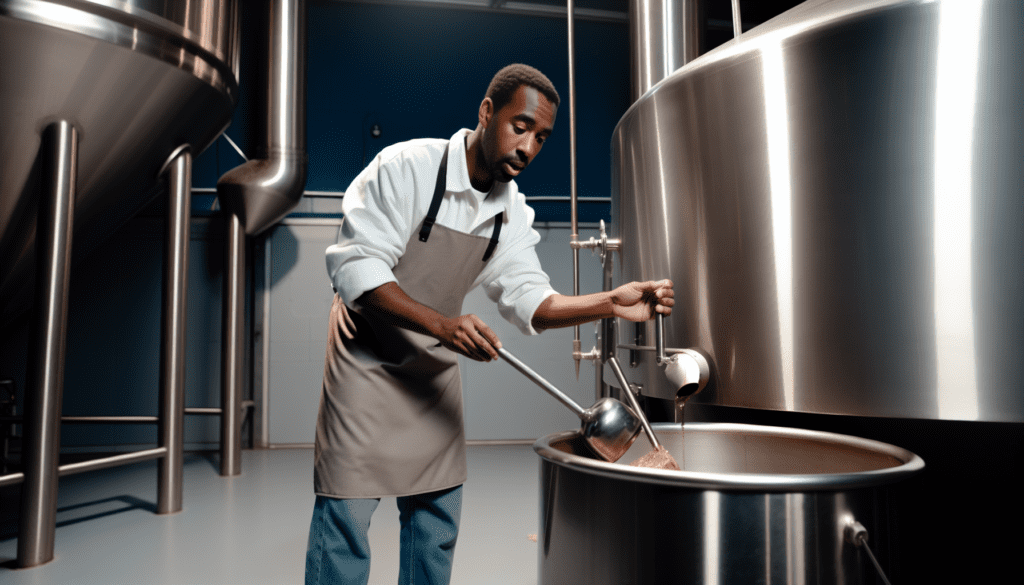
The art of brewing and enjoying lager beer goes beyond just understanding its characteristics or history. It requires patience, proper techniques, and an appreciation for the beer’s subtle nuances.
We will explore the specific techniques involved in brewing lagers and tips for thoroughly enjoying this delightful brew.
Lager Brewing Techniques
Brewing a lager involves a meticulous process that requires a keen eye for detail. The mashing process typically involves a protein rest to break down complex proteins, followed by a saccharification rest for sugar development.
Once the boiling phase is complete, trub removal is crucial to ensure flavor stability, especially in light-colored and low-hopped lager beers. The lager yeast must be properly prepared, including cultivating a large starter culture and acclimating it to the lower temperatures required for lager beer fermentation.
Tasting Tips
Enjoying a lager goes beyond just taking a sip. Different lagers are best enjoyed in specific types of glassware catered to their style, such as pint glasses or mugs for dark or mass-produced lagers, and Pilsner glasses for Pilsner beers.
Pouring the lager correctly into the appropriate glass at a 45-degree angle can enhance the beer’s visual and aromatic qualities. And when it comes to tasting, one should sniff the beer before sipping, swirl gently to release aromatics, and taste it slowly to savor the lingering flavors.
Summary
As we wrap up this exploration of lager beer, it’s clear that lagers offer a unique beer-drinking experience. From their distinct characteristics and rich history to their diverse styles and key differences from ales, lagers stand out in the vast world of beer. The meticulous brewing process of lagers, which requires patience and precision, results in a beer with crisp and refined flavors that are enjoyed by many around the world.
Whether you’re a seasoned beer enthusiast or a novice seeking to learn more about beer, understanding and appreciating the world of lager beer enriches your beer-drinking experience. So, the next time you enjoy a cold lager, remember the centuries of brewing tradition, meticulous techniques, and subtle nuances that go into each sip.
Frequently Asked Questions
What’s difference between beer and lager?
The main difference between beer and lager lies in the brewing process. Lager, which means “storage” in German, is brewed at low temperatures and ferments from the bottom up.
What is the difference between lager and craft beer?
The main difference between lager and craft beer is the production process and ingredients used. Lager is characterized by cold fermentation and can be mass produced, while craft beer is typically made in small batches with high-quality and specific ingredients.
Is Corona a lager beer?
Yes, Corona is a pale Mexican lager with a light and crisp flavor profile, making it distinct from other mass-produced American lagers and European beers.
Is ale the same as beer?
Yes, ale is a type of beer that falls under the broader category of beer. Ales are made with a different kind of yeast and ferment at a different temperature, distinguishing them from other types of beer.
What is the significance of the fermentation process in lager brewing?
The fermentation process in lager brewing using bottom-fermenting yeast and cold temperatures contributes to the beer’s distinctive crisp taste and clarity. This process is essential for achieving the characteristics associated with lager beer.


Comments
2 responses to “Define Lager Beer: Exploring the Crisp World of Lager”
[…] strains and top fermenting yeasts contributing to certain beer styles and traditional uses, while lager yeast and bottom fermenting yeasts are associated with bottom fermentation at cooler temperatures and specific fermentation vessels, […]
[…] Lager, a beer type, is brewed with a unique yeast that prefers cold fermentation environments. It has a smooth, crisp taste and can have different levels of bitterness and sweetness, with colors ranging from dark lagers to light golden. As enthusiasts brew beers like lager, they pay close attention to maintaining the ideal temperature for cold fermentation. […]